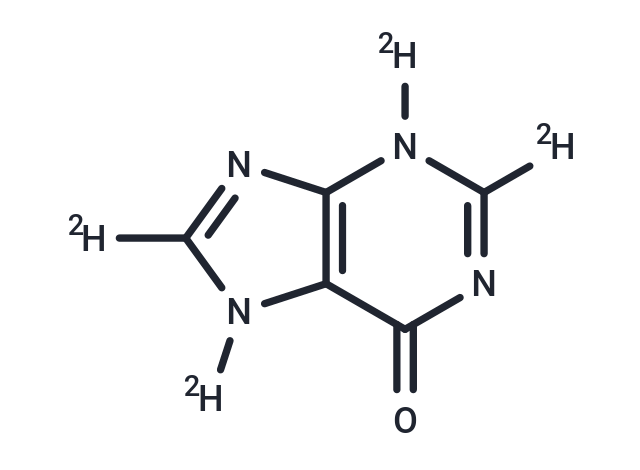Shopping Cart
- Remove All
 Your shopping cart is currently empty
Your shopping cart is currently empty

6-Hydroxypurine-d4 is a deuterated compound of 6-Hydroxypurine. 6-Hydroxypurine has a CAS number of 68-94-0. Hypoxanthine, also known as purine-6-ol or Hyp, belongs to the class of organic compounds known as purines.Hypoxanthine is a naturally occurring purine derivative and a reaction intermediate in the metabolism of adenosine and in the formation of nucleic acids by the nucleotide salvage pathway. Under normal circumstances hypoxanthine is readily converted to uric acid.hypoxanthine is first oxidized to xanthine, which is further oxidized to uric acid by xanthine oxidase.

| Pack Size | Price | Availability | Quantity |
|---|---|---|---|
| 1 mg | Inquiry | 35 days | |
| 5 mg | Inquiry | 35 days |
| Description | 6-Hydroxypurine-d4 is a deuterated compound of 6-Hydroxypurine. 6-Hydroxypurine has a CAS number of 68-94-0. Hypoxanthine, also known as purine-6-ol or Hyp, belongs to the class of organic compounds known as purines.Hypoxanthine is a naturally occurring purine derivative and a reaction intermediate in the metabolism of adenosine and in the formation of nucleic acids by the nucleotide salvage pathway. Under normal circumstances hypoxanthine is readily converted to uric acid.hypoxanthine is first oxidized to xanthine, which is further oxidized to uric acid by xanthine oxidase. |
| Molecular Weight | 140.14 |
| Formula | C5D4H0N4O |
| Storage | Powder: -20°C for 3 years | In solvent: -80°C for 1 year | Shipping with blue ice. |

Copyright © 2015-2025 TargetMol Chemicals Inc. All Rights Reserved.